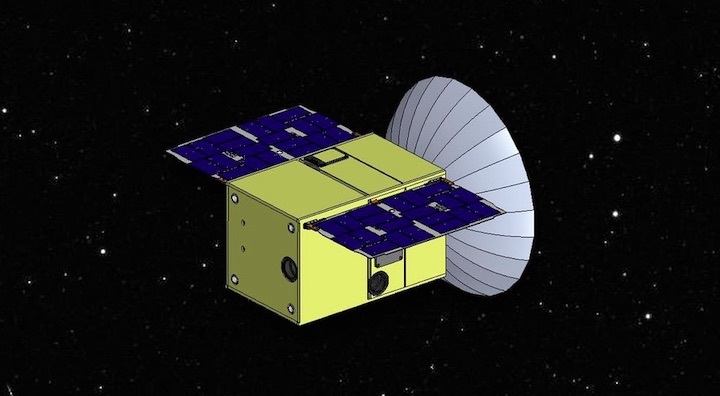17.09.2019

WASHINGTON — NASA has awarded a contract to a small business for the development of a cubesat designed to demonstrate the use of the unique orbit planned for the agency’s lunar Gateway.
The $13.7 million contract to Colorado company Advanced Space covers the development of Cislunar Autonomous Positioning System Technology Operations and Navigation Experiment (CAPSTONE), a 12-unit cubesat that the agency could launch as soon as the end of 2020.
The spacecraft will likely be the first spacecraft to use what’s known as a near-rectilinear halo orbit, an elliptical polar orbit around the moon whose closest point to the moon is over one pole and most distant point is over the other pole. NASA plans to use that orbit for the lunar Gateway, which will serve as a staging point for human landings near the south pole of the moon starting in 2024.
CAPSTONE will demonstrate that the orbit is stable for spacecraft, reducing what NASA calls “logistical uncertainty” for the Gateway. The spacecraft will also test a navigation system that will measure its position relative to NASA’s Lunar Reconnaissance Orbiter and how that distance is changing over time, allowing the cubesat to measure its position without relying on ground stations.
“This mission is highly ambitious in both cost and schedule — and taking that deliberate risk is part of the objective of this mission — alongside the rapid technological advancement in cislunar navigation and the opportunity to verify orbital trajectory assumptions and retire unknowns for future missions,” Jim Reuter, associate administrator for space technology at NASA, said in a Sept. 13 statement announcing the CAPSTONE contract.
Partnering with Advanced Space on the mission is Tyvak Nano-Satellite Systems, a cubesat developer. Brad Cheetham, chief executive of Advanced Space, said Tyvak will provide the spacecraft while Advanced Space will handle overall project management and some of the spacecraft’s key technologies, like its navigation system.
Advanced Space has been working on lunar navigation technologies, including winning a Space Act Agreement with NASA in July for that system, called the Cislunar Autonomous Positioning System (CAPS). That earlier agreement, Cheetham said, will support CAPS, and thus the CAPSTONE mission, by giving the company access to NASA expertise as well as resources from the Lunar Reconnaissance Mission.
“The CAPSTONE mission will be an opportunity to demonstrate core components of CAPS as well as other capabilities we have been working on,” he said. “We see this work as a pathfinder for NASA as well as future missions to the moon by others.”
How CAPSTONE makes it to lunar orbit remains uncertain. NASA’s statement said that the agency was considering a number of options, including launching the cubesat as a primary payload on a small launch vehicle. NASA anticipates the spacecraft reaching lunar orbit in three months for a six-month primary mission.
Cheetham said that NASA is responsible for procuring the launch. “I expect we will have more details on this aspect of the mission in the coming months,” he said.
Quelle: SN
